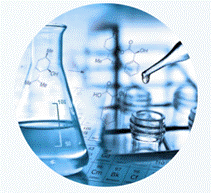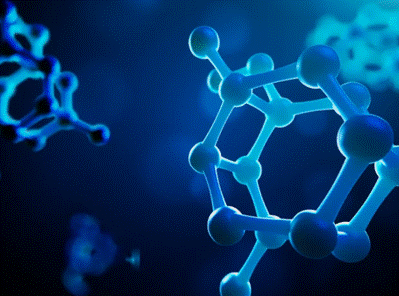Pharmacokinetics
services play a pivotal role in drug development. They encompass the study of
how drugs move through the body, providing critical information for developing
safe and effective medications. By analyzing absorption, distribution,
metabolism, and excretion (ADME), pharmacokinetics helps scientists understand
a drug’s behavior in the body. These insights guide dose adjustments, predict
interactions, and inform clinical trial designs. The demand for these services
is high, as they ensure compliance with regulatory standards and ultimately
support patient safety. A comprehensive understanding of pharmacokinetics services is essential for
pharmaceutical companies to navigate the complexities of drug development
successfully. Let’s delve deeper into the intricacies of pharmacokinetics, its
significance, and the essential services it encompasses.

Understanding
Pharmacokinetics
Pharmacokinetics is a branch of
pharmacology dedicated to quantifying drug movement in the body over time. By
understanding this, researchers can optimize drug dosages and ensure
therapeutic efficacy. The core processes—absorption, distribution, metabolism,
and excretion—form the backbone of this study.
The ADME Framework
ADME
is vital in pharmacokinetics, detailing a drug’s journey from administration to
elimination. Absorption refers to how a drug enters the bloodstream. It can
occur via oral ingestion, injections, or topical application, influencing onset
and intensity. Distribution describes how the drug spreads through bodily
fluids and tissues, relying on factors like blood flow and protein binding.
Metabolism, primarily occurring in the liver, involves chemical alterations
that facilitate excretion. Finally, excretion clears drugs via urine or feces,
determining the active duration in the body. Each phase impacts the drug’s
overall effectiveness and safety profile.
Importance
in Drug Development
In
drug development, understanding pharmacokinetics is crucial. Accurate ADME
profiling provides insights into optimal dosing, frequency, and the potential
for adverse effects. It helps anticipate interactions with other drugs,
heightening safety margins. For clinicians, this knowledge allows for better
therapeutic strategies and personalized medicine approaches. Regulatory
authorities—such as the FDA and EMA—rely on pharmacokinetics data to assess
drug safety and efficacy. A robust pharmacokinetics profile supports successful
regulatory submissions, reducing time to market and driving innovation in new
drug discoveries.
Key
Pharmacokinetics Services
Pharmacokinetics services offer
comprehensive analyses to guide drug development processes.
In
Vitro ADME Studies
In
vitro studies provide initial insights into a drug’s ADME characteristics.
Utilizing laboratory models, scientists simulate drug interactions in bodily
environments. These tests help identify metabolic pathways and potential
interactions with enzymes and proteins. In vitro studies focus on absorption
rates, distribution patterns, and potential metabolic byproducts, using cell
lines and imaging technologies. Companies can save time and resources by
predicting a drug’s behavior at an early stage. By assessing a compound’s
stability, permeability, and metabolic transformation, these studies aid in the
selection of promising drug candidates before advancing to in vivo testing.
In Vivo PK Studies
In
vivo pharmacokinetics studies evaluate a drug’s behavior within living
organisms, providing real-world insights into ADME processes. These studies
involve administering the drug to animal models or human subjects and measuring
its absorption, distribution, metabolism, and excretion over time. In vivo
studies offer comprehensive data on a drug’s biological half-life,
bioavailability, and clearance rates, reducing uncertainties in human trials.
They guide dose selection, identify potential toxicity, and help refine
formulations for optimized therapeutic impact. Improved predictions of human
responses lead to better-designed clinical trials and more reliable outcomes.
Pharmacokinetics Modeling and Analysis
Pharmacokinetics modeling provides
a mathematical framework to analyze drug interactions in the body.
PK/PD
Modeling Techniques
Pharmacokinetics/pharmacodynamics
(PK/PD) modeling correlates drug concentrations with therapeutic effects. These
computational techniques allow scientists to simulate various dosing scenarios,
linking drug levels to desired outcomes. PK/PD models inform dose optimization,
ensuring efficacy while minimizing side effects. By integrating data from
preclinical studies, these models predict the drug’s behavior in humans. They
guide clinical trial designs, helping refine dosing regimens. Modeling software
assists in visualizing these relationships, providing valuable insights into
the time course of drug effects and supporting alternative testing avenues.

Applications
in Clinical Trials
In clinical trials,
pharmacokinetics modeling aids in dose selection and study design. It informs
entry criteria, population selection, and duration, ensuring precise results.
By predicting human responses, these models enhance patient safety and regulatory
compliance. They assist in understanding variability among patient groups,
addressing disparities related to age, sex, or genetic factors. Modeling allows
pharmaceutical companies to streamline trials, reducing costs and time. These
applications ensure drug candidates meet efficacy and safety standards,
accelerating development while adhering to regulatory mandates.
Regulatory
Considerations
Compliance with regulatory
guidelines is imperative in pharmacokinetics.
Compliance
with Guidelines
Pharmacokinetics studies
must adhere to international guidelines to ensure data reliability and
accuracy. Guidelines set by authorities like the FDA, EMA, or ICH lay the
foundation for study design, execution, and reporting. Successful compliance
enhances credibility and market acceptance. Ignoring these standards can lead
to costly delays, rejections, or safety concerns. Following guidelines ensures
ethical considerations, validity, and reproducibility. Transparent protocols,
standardized methodologies, and thorough documentation are essential for
fostering trust and meeting the rigorous demands of global regulatory
frameworks.
Documentation
and Reporting
Comprehensive
documentation is vital to maintaining traceability in pharmacokinetics studies.
It encompasses processes, methods, and results that substantiate findings
presented to regulatory agencies. Clear and accurate reporting allows informed
decision-making, addressing inquiries swiftly. Optimal documentation involves
detailed logs, experimental data, validation reports, and quality control
records. It supports efficient validation, auditability, and facilitates peer
reviews. Proper records assure stakeholders of compliance and data integrity,
paving the way for regulatory approval and market success.
Conclusion
Pharmacokinetics
services are indispensable in drug discovery and development. Through
meticulous study of a drug’s ADME properties, these services ensure safe and
effective medicines reach patients. They assist researchers and developers in
optimizing dosages and predicting interactions. Moreover, regulatory
authorities rely on pharmacokinetics for safety evaluations and compliance. By
understanding its significance, the pharmaceutical industry can continue to
innovate and address unmet medical needs. As pharmacokinetics evolves, it will
play a crucial role in advancing personalized medicine and improving global
healthcare outcomes.



